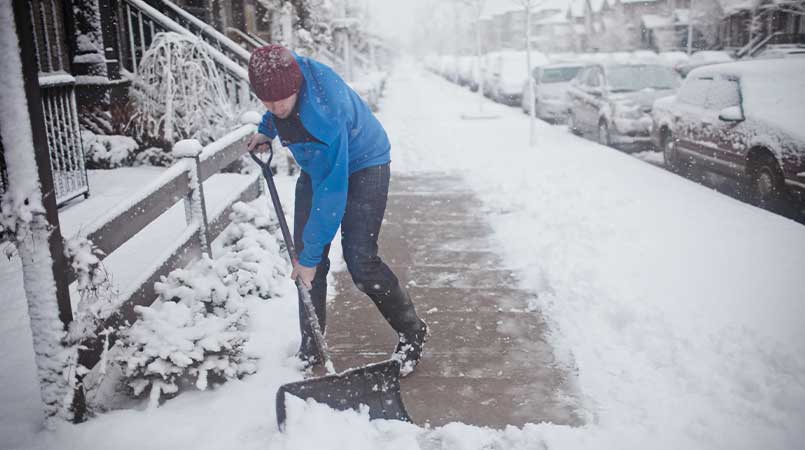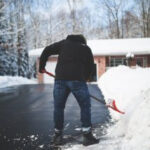The Bent-Handle Snow Shovel is an Ergonomic Aid: Fact or Fiction?
Posted on February 5, 2020 | in Ergonomics

Since we wrote our last blog post about snow shovels, new research has been conducted about the effectiveness of bent-handle shovels. Here are the latest findings to help you make an informed decision if you’re in the market for a new one this winter.
Every Year There Are Over 12,000 Reported Injuries from Snow Shoveling
If you’ve ever shopped for a snow shovel, you’ve probably seen two different models on the shelf: the straight-handle shovel and the bent-handle shovel. The bent-handle shovel usually claims some type of benefit relating to ergonomics. Every year there are over 12,000 reported injuries from snow shoveling, with 34.3% due to musculoskeletal overexertion by the back. The bent-handle shovel aims to reduce back strain from snow shoveling to help prevent this type of injury, but is it effective? In an article by Lewinson et al., researchers answer this question.
The Latest Research Findings on Snow Shovels
Snow shoveling with a straight-handle shovel tends to produce forward and backward bending in the upper body. It also causes stress in the lowest part of the back, which can lead to all sorts of problems. The idea behind the bent-handle shovel is to take the bending and stressors out of the back and put them into the handle of the snow shovel itself. This is done with two opposing bends in the handle, which enable the user to produce the same type of push (compared to a straight-handle shovel) while in a more upright position. As it turns out, this design is indeed effective in doing just that. Lewinson et al. found that the bent-handle shovel reduces force occurrences on the back by 16.5%, with significant reductions in forward and backward upper body bending.
Choose the Bent-Handle Shovel to Give Your Back a Less Stressful Winter
So what does all of this mean? For starters, less stress in the lower back. This is particularly important for elderly individuals and for those who have previously suffered lower back injuries. By reducing the stress on the lower back, the bent-handle shovel has the potential to reduce a variety of back injuries caused by, or aggravated during, snow shoveling. These include muscle strains, slipped/herniated discs, nerve irritation such as sciatica, and instances of spondylolisthesis, which occurs when one part of the spine detaches and slips over the other. Spondylolisthesis is particularly prevalent in the lower backs of older individuals and tends to occur in the same areas of the back stressed during shoveling.
The bent-handle shovel might have a strange look, but the design is effective. Although it doesn’t have the ability to completely eliminate lower back forces, it offers a clear advantage over the straight-handle shovel counterpart and would fare well in just about any household garage. If you have a friend, relative, or are yourself in need of a viable snow shoveling solution, turn to the bent-handle shovel to give the back a less stressful winter.
References
1. Denard et al. 2010. Lumbar spondylolisthesis among elderly men: prevalence, corelates, and progression. Spine. 35(10):1072-1078.
2. Lewinson et al. 2014. Influence of snow shovel handle configuration on lumbosacral biomechanics during a load-lifting task. Appl Ergon. 45(2):234-8.